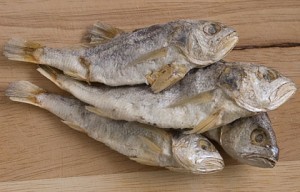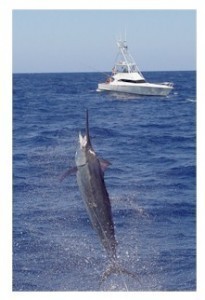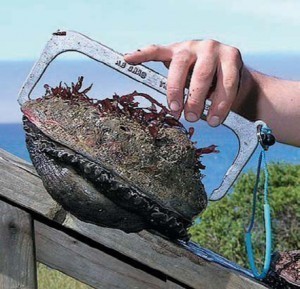What is the Size of a Bombay Duck?
The size of the Bombay duck (Harpadon nehereus) is about  16 inches (41 cm) long. The fish is also known as the bummalo. The fish is found mostly in the Kutch and Mumbai waters. Some species can also be seen at the China Sea and the Bay of Bengal.
16 inches (41 cm) long. The fish is also known as the bummalo. The fish is found mostly in the Kutch and Mumbai waters. Some species can also be seen at the China Sea and the Bay of Bengal.
Classification
The fish belongs to the Harpadon genus in the Synodontidae family of the Aulopiformes order. They belong to the Actinopterygii class.
Physical Characteristics
The fish has a forked tail and a large mouth. The color is brown or gray. Some dark patches are found throughout the body. The pelvic fins and the pectoral fins are large too, no matter what the size of the Bombay duck is. It is related to some species of the genus Harpadon. These are scattered all over New Guinea, Australia and Africa.
Origin of the Name
The facts are still unclear. One theory is that the name emerged during the British Raj. According to the story, the fish was carried off to the rail. Based on some accounts, the compartments of the Bombay Dak (the Bombay Mal) were filled with the smell of the fish.
Another story says the railways where the train traveled smelled like the fish that people referred to it as the Bombay duck. While these stories are often repeated, there is no evidence that either one is true.
Another popular theory is that the name originated with Robert Clive. When he conquered Bengal, he was able to sample the fish.
According to the story, Clive gave it the name Bombay duck because the smell reminded him of the newspapers that came in the Bombay cantonments. No matter where the name came from, what’s clear is that the name eventually made its way to Indian restaurants in the UK.
Part of Indian Cuisine
The pungent smell is always present, no matter what the size of the Bombay duck is. However, it remains a popular dish in India. The freshly caught Bombay duck is frequently fried. When in dry form, the fish is consumed in a curry.
Unlike other fish, the bones can be chewed with ease. The fish is also made as a pickle. The fish is also eaten in China. It is frequently fried and made with flour. The Bombay duck is eaten in South Africa and Hong Kong.
Availability in Other Countries
In 1997, the fish was banned by the European Commission (EC). The ban had nothing to do with sanitary issues; rather the ban was imposed because the EC permitted only Indian fish imports that came from approved canning and freezing factories.
In response to requests from the Indian High Commission, the ban was lifted. But while the fish could now be dried, it had to be done in packing stations approved by the European Commission.
The size of the Bombay duck and its taste has made it a popular dish in India. Increasingly however, the dish is also becoming a hit among other Asians. The fish is also sold in Canada and known as bumla.





